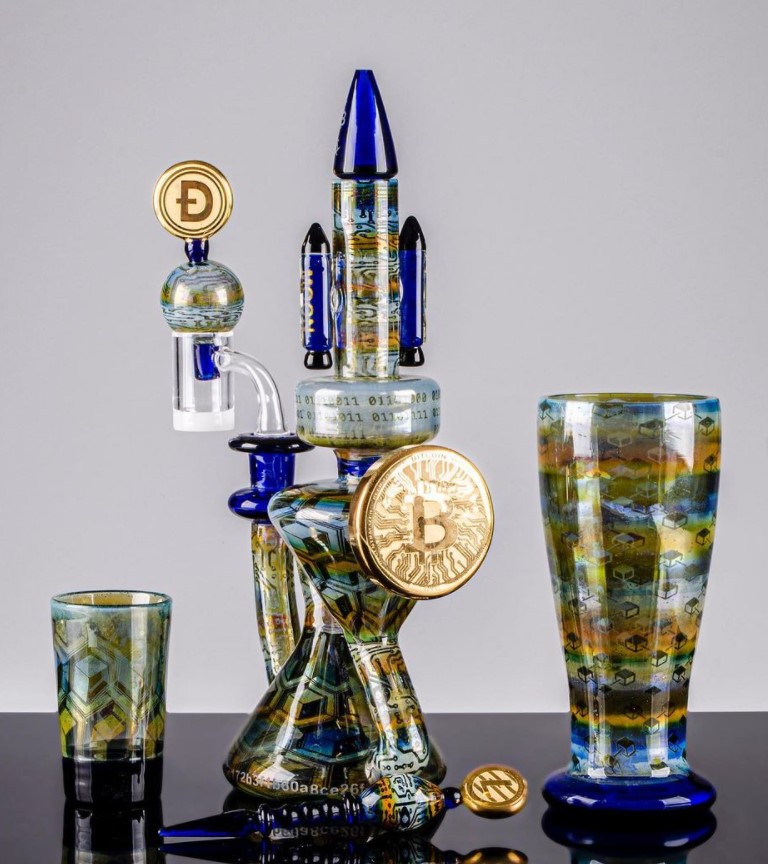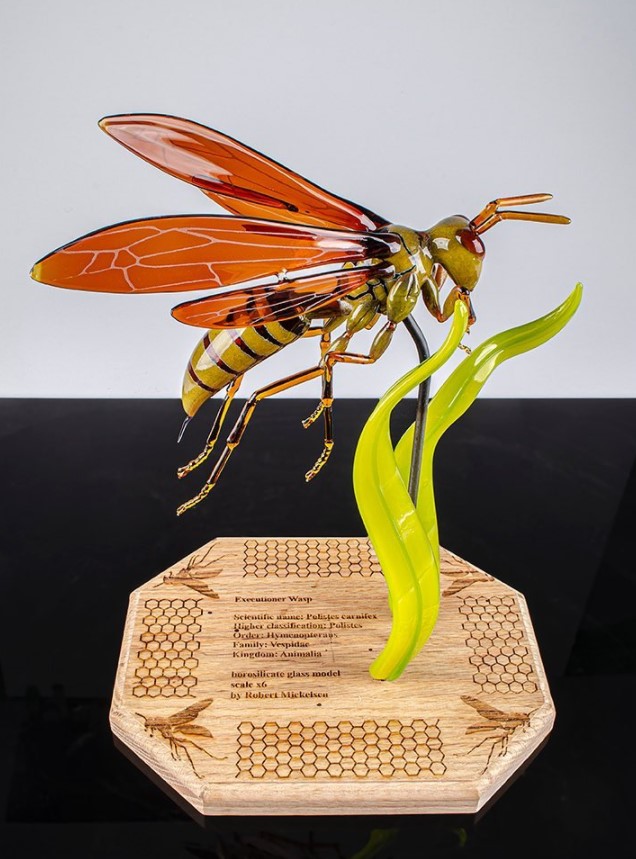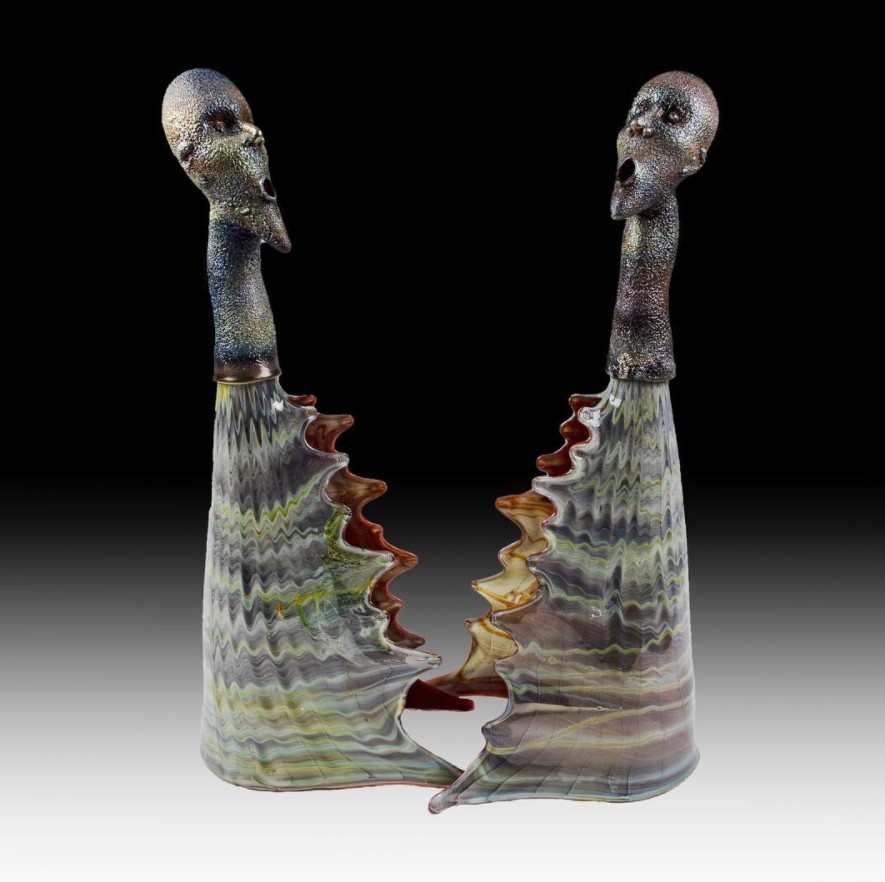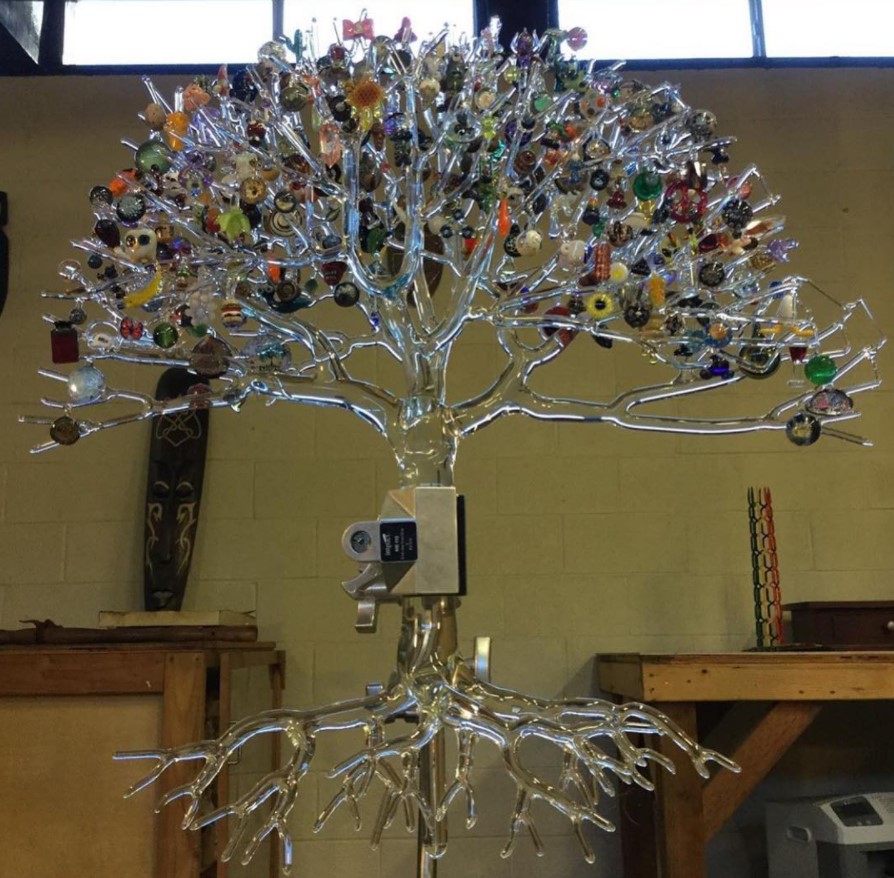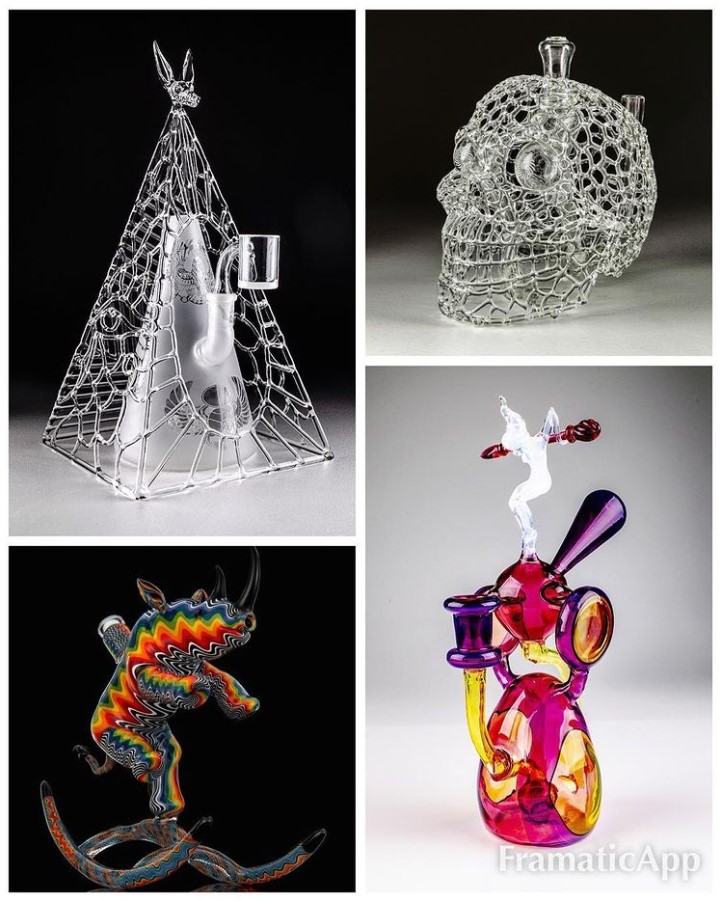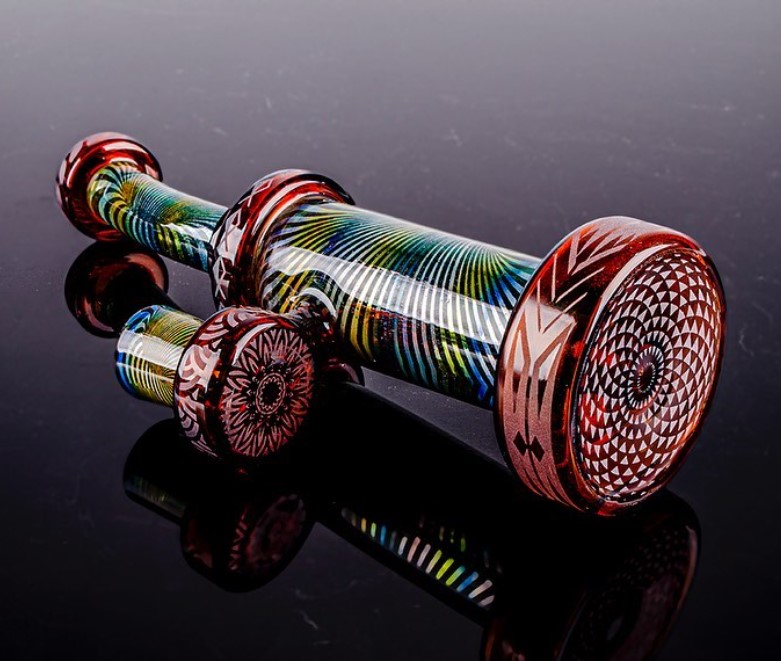
We had a rare opportunity to interview Robert Mickelsen, an esteemed figure in American glassblowing, so we sat down with him to discuss his life and career. Robert Mickelsen has been a household name in the world of fine art glass since the late 1970's. Only a very small handful of American glassblowers who were active in that time period continue to work today, and fewer still were able to rise to prominence, but those that did became iconic figures in the annals of American glass art history. Robert Mickelsen is one of these figures; his journey in glassblowing began in 1974 in a local shopping mall, where an ambling young Mickelsen stumbled upon a glassblower who was running a shop. The blower made various knickknacks, working in the open so that customers could watch the glassblowing process. At the time Robert Mickelsen was a recent college dropout who was meandering through life, uncertain of what the future held in store for him. Mickelsen was mostly doing odd construction jobs to make ends meet, and he thought that glassblowing could be a more interesting and enjoyable way to make a living than the work he had been doing up until that point. So Robert Mickelsen talked to the glassblower at the mall and was hired on by him to start making small decorative items.

Robert Mickelsen is a self-described "firebug", with an unexplainable attraction to flame and molten glass, and during the two years that he worked with the shopping mall glassblower Mickelsen didn't care what items he was blowing, he was simply excited to be making anything from molten glass. He learned basic sculptural techniques and made inexpensive decorative items like small animals and ornaments that were usually sold during holidays, mostly being purchased by elderly customers. After two years Robert Mickelsen and his girlfriend moved to Florida and Robert started doing more solo work. Being a glass artist in the 1970's was a different world in comparison to today; nobody was making pipes or anything remotely cannabis-related at that time, and making low-priced glass knickknacks was the most reliable way to make a steady income. There was basically only one contemporary artist in America who had broken out of this mold to become successful as a high-end artist, and his name was Hans Godo Frabel. Frabel is a German immigrant who rigorously studied scientific glassblowing at Jena Glaswerke in Mainz. He brought this knowledge with him to America and in the late 1960's Frabel opened an art studio in Atlanta, Georgia which remains one of the most successful glass studios in North America, regularly receiving commissions to make trophies for Hollywood award ceremonies. By the 1970's Hans Godo Frabel had made a name for himself in the world of fine art, and Robert Mickelsen sought out Frabel's tutelage and advice so that Mickelsen could expand his knowledge and learn new techniques.
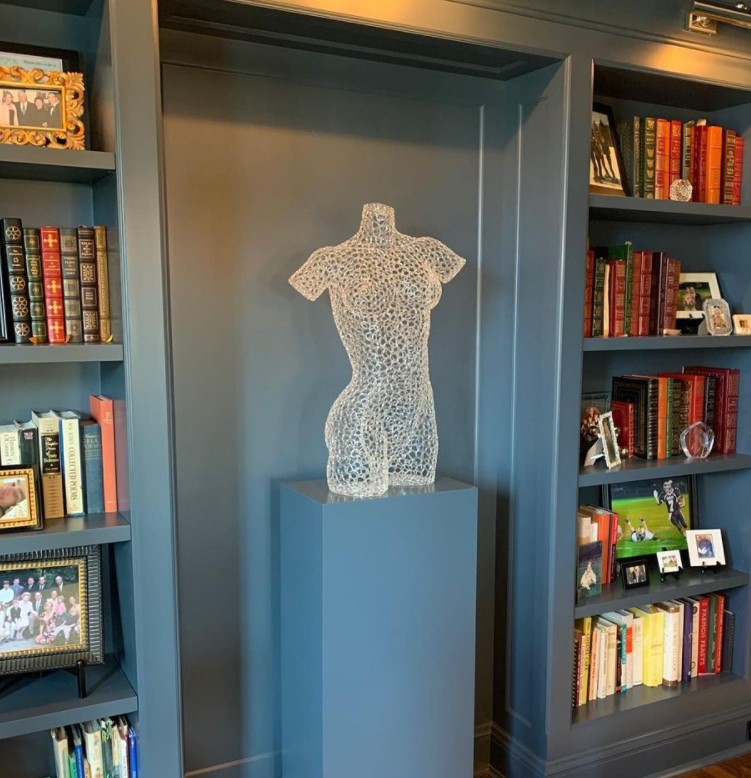
From this point onward Robert Mickelsen's glass began to take on a bolder and more artistic direction. Through Hans Godo Frabel, Mickelsen met a lifelong friend named Ginny Ruffner, another of Frabel's students, who would go on to become one of the most preeminent and respected glassblowers in America. During the period from the late 1970's up to the late 1980's Robert Mickelsen sold his work at outdoor craft fairs. In 1989 Mickelsen took a class from legendary soft glass paperweight artist Paul Stankard, and Mickelsen credits Frabel and Stankard as his true mentors in glassblowing. Paul Stankard taught Mickelsen so much about glassblowing, and many of the lessons that Stankard taught him would take years for Mickelsen to fully understand and apply to his own art. Still, this marked a turning point for Mickelsen, and after he began to apply the lessons that he learned from Paul Stankard, Robert Mickelsen started making his own waves in the world of fine art glass. Today, Robert Mickelsen has pieces on display in every major glass art museum in the United States, and in recent years he has been making more and more cannabis glass, with the expansion of cannabis legalization opening a relatively new and legal glass market which was once heavily prosecuted.
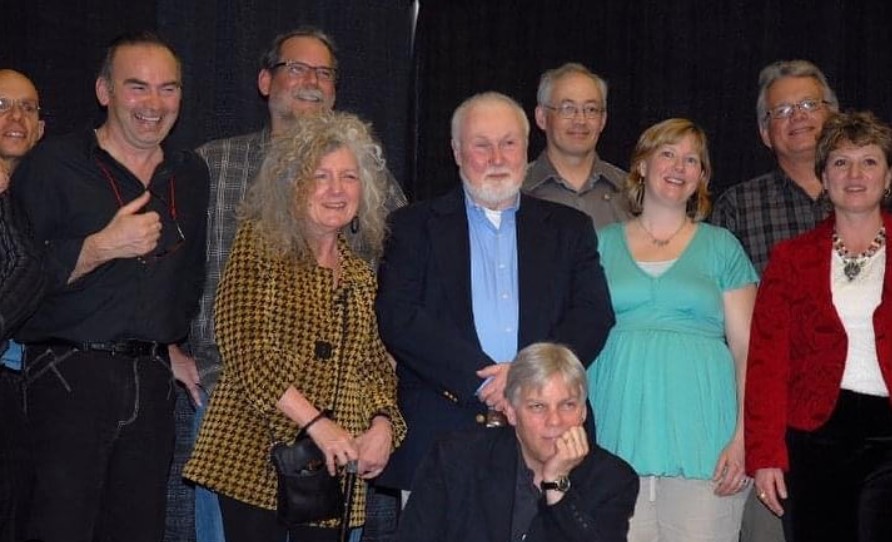
Robert Mickelsen believes that creativity comes from the subconscious, and that if a person can find ways to tune in to their subconscious then that person will become more creative. Mickelsen has often struggled with this aspect of his creativity, feeling that he is not naturally aware of his subconscious thoughts or how to tune into that part of his mind, but there are ways that one can work to become more aware of these subconscious ideas. Much of Robert Mickelsen's subconscious creativity comes from dreams and the state of half-consciousness that one experiences during the transition from dreams to waking life. Being more aware of this state often allows Mickelsen to tap into his subconscious brain. Mickelsen also finds that subconscious thoughts are easier to uncover when he is working and getting into a specific "mental zone" when the mind is focused on the task at hand. In this zen-like focused state ideas will come to an artist seemingly from nowhere, and the artist has to work to recognize and act on these ideas because as Mickelsen said to us, "... that's the good stuff, that's where the magic comes from."
These days Robert Mickelsen loves to make cannabis glass, something that he never would have considered thirty years ago. He derives a lot of satisfaction from the challenge of making rigs, pipes, and bubblers, as they have to function perfectly while still achieving the unique artistic vision that Mickelsen strives for in each individual piece. Even at 69 years old Robert Mickelsen continues to push himself to learn more about glass, technology, the world, and the people that comprise it. He often says, "the more you learn, the more you find out you don't know." Mickelsen learns something new from every person that he encounters, especially other glassblowers, and even when he takes on the role of instructor for his students. "No one learns more than the teacher," he told us, pointing out that in private instruction the teacher is the one who gets graded, and if the teacher doesn't work to adapt their lessons to individual students' learning styles then those students won't be able to learn effectively, and they won't benefit from the instruction for which they paid. Mickelsen is not a workaholic and believes that one should maintain a healthy balance between work, family, friends, and the self, in order to experience as much of what life has to offer as possible. In the future Robert Mickelsen intends to continue working and soaking up life just as he has up to now, though as he is getting older he recognizes that he will need to slow down and begin to take life a little easier. You can check out his incredible body of work at the Corning Museum of Glass as well as many other museums that focus on American art glass, and you can also see a ton of his work over on his Instagram page. (@ramickelsen)
